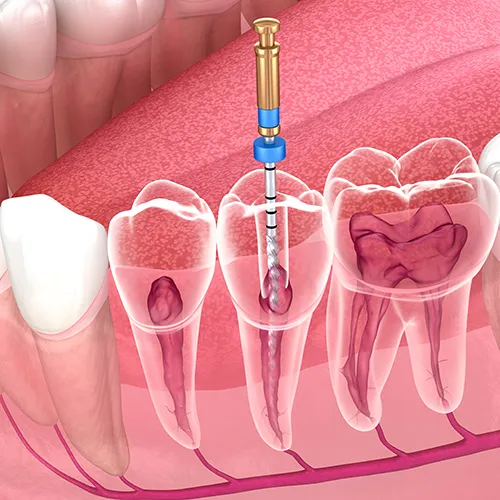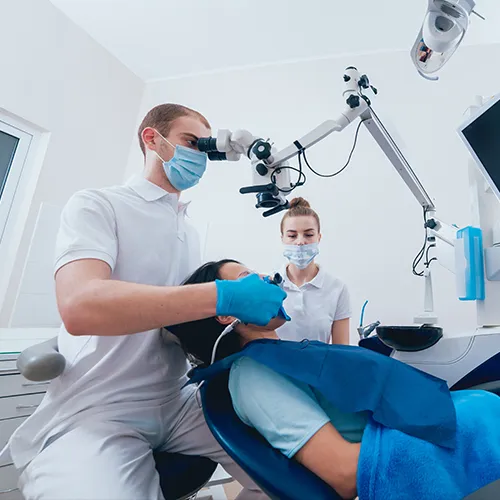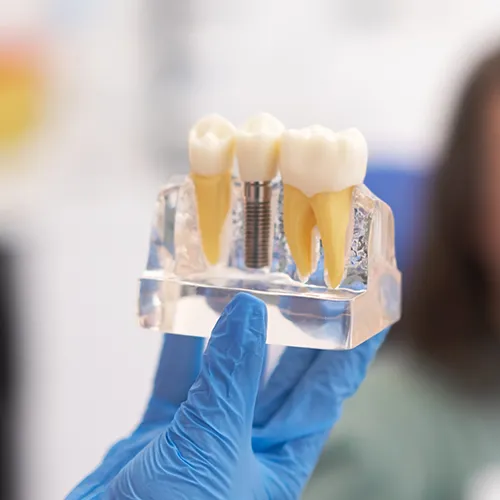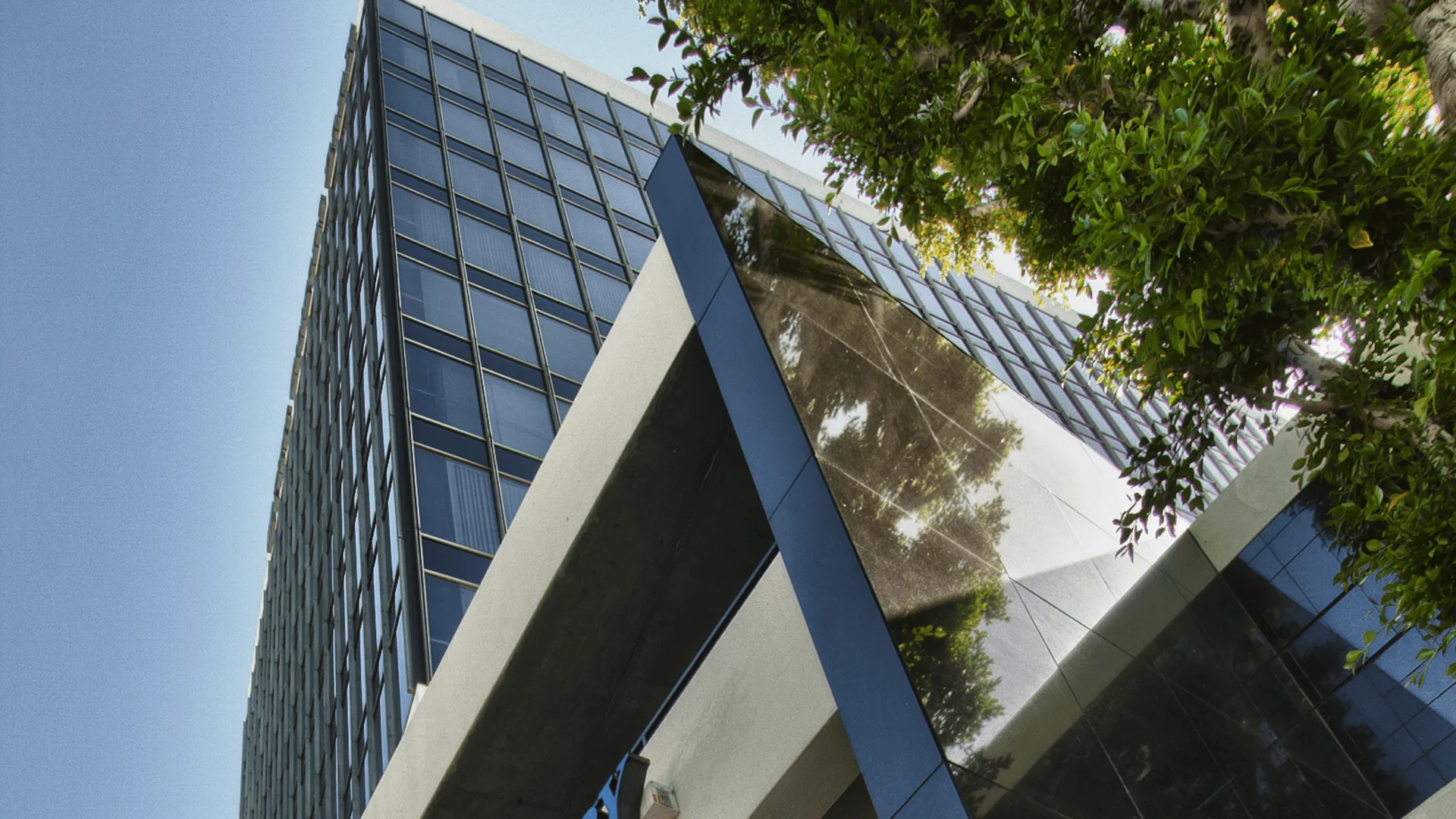Restorative Dentistry, Implant Dentistry
When Do You Need to See a Periodontist?
A periodontist is a dental specialist who prevents, diagnoses and treats gum diseases like periodontitis and gingivitis. A periodontist’s procedures include deep gum cleaning and other therapies like root canals, implant placement, tooth extraction, jaw bone surgery and cosmetic dental procedures.
You need to see a periodontist if you want to enhance your smile, treat gum recession, loose teeth, bleeding gums or persistent bad breath.
Although general dentists can perform periodontal procedures, you should see a periodontist because they have specialized expertise, extensive experience and advanced skills.
Periodontists treat gum diseases promptly and minimize the harm that can happen to your gums and teeth.
Now, it’s time to learn the three reasons to see a periodontist.
A dentist can perform a tooth extraction, but the procedure is painful. In addition, the underlying bones can be damaged, and you might need another operation to help bone regeneration.
The conventional methods used by the dentist to remove teeth can harm the surrounding bones and tissues and reduce the chances of being able to use dental implants.
However, if you consult a periodontist for tooth removal, the jaws and connective tissues are subjected to less trauma, leaving a stable foundation for future dental implants.
Periodontists are meticulous in their procedures. Therefore, they decrease the likelihood of you needing a bone graft. In fact, for most patients attended to by a periodontist, dental implants can be placed on the same day as tooth removal to decrease the need for another surgical procedure.
- A gum abscess (collection of pus within the affected tooth leading to the formation of a bump on the gums).
Untreated gum abscesses can pull the gum away, leaving more room for bacteria to spread and grow. The infection will then spread to the bone tissues causing tooth loss.
If you think you have a gum abscess, please make an appointment with the periodontist as early as possible.
When a tooth or root infection is left untreated for too long, it damages the jaw bone. It will also alter the contours of the face, giving you a funny appearance. Thin and degenerated jawbones can’t support the facial muscles adequately. Thus, you’ll have a sunken face that looks old prematurely. The periodontist usually replaces and repairs the areas around the natural teeth. The massively damaged tooth is extracted. Importantly, prompt treatment is paramount to prevent excessive bone and tooth loss.
- Painless gum or jawbone disease.
Gums are of paramount importance because they protect your teeth from decay, bone loss and intense sensitivity by offering protection to the pup cavity. If the gum tissues are eroded, the condition is called gum recession. Gum recession puts you at risk of losing your precious teeth if the surgical intervention is delayed.
If you have to undergo a procedure that involves tissue sculpting or grafting, you need to see a periodontist. The gum disease specialist will reposition the gum tissues over the exposed tooth through gum grafting or tissue sculpting.
- Prevents excessive tissue or gum loss
- Protects your tooth from decay and possible bone loss
Gum recession is a serious dental issue, but not all cases will require surgical management. To maintain healthy gums, brush your teeth daily and periodically visit the periodontist.
- Tooth sensitivity is a warning that your gums are receding. Exposure of the tooth roots might be the problem if you feel exaggerated teeth sensitivity, particularly near the gum-line. Schedule an appointment with a periodontist to identify the cause of sensitivity on your teeth.
Tissue sculpting is reshaping the areas around your teeth and removing the excess gum tissues. The procedure is important to prevent gums from dominating your smile. Therefore, if you have a gummy smile or you want to improve your smile, a periodontist will do tissue sculpting so that you don’t have teeth that are too small or too short.
Tissue sculpting usually takes approximately 30 minutes. Your periodontist will do the following:
- Clean the gums and teeth
- Numb the gum tissues using a local anesthesia
- Lessen gum tissues around the affected teeth
- Remove excess bone and gum tissues to expose the crown of each tooth
- Reshape remaining tissues
- Apply dental bandages or suture the operated areas
Once gums have healed, the proportion of teeth and gums is significantly improved to enhance the quality of your smile.
If you’re experiencing bleeding gums, receding gums, bad breath, sensitive teeth, difficulty chewing, loose teeth, swollen gums, or painless jaw disease, you need to see a periodontist without delays. Early treatment of gum disease is important to prevent it from getting worse, turning complex or becoming more costly to manage.





















